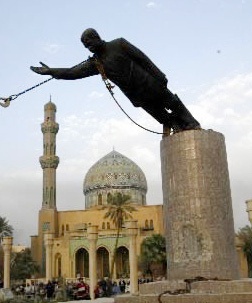
One of the most shocking surprises for the US soldiers, who landed in Basra, Iraq after over throwing the dictator Saddam Hussein, was his immense Palace and its sheer beauty. Carved above its front door the title ‘Prince of Arabs’ referring to Saddam Hussein can still be seen, along with the toilets with pure gold finishing. Now 13 years after United States invaded Iraq, Saddam’s Palace will be turned into a museum by the September this year.
The massive palace located in one of the most famous cities of Iraq will be the first museum to be opened for public after the invasion. The palace served as a mess hall for British soldiers up until September 2007, when British army decided to pull out of Basra.
The organizers of the museum are determined to create a state of the art museum, which will exhibit more than 3,500 objects from a number of historic periods including ancient Sumer, Babylon and Assyria.
A British charity called ‘Friends of Basra Museum’ partly funded the massive project which costs some $3.5 million. The charity amassed $500,000 in donations mainly from a number of oil companies, but the biggest setback came from the Basra government. The government first agreed on providing with $3 million support towards the cause, which in turn triggered the donation campaign, but later it pulled out without fulfilling its promise. The British Museum generously agreed to provide all the curatorial services free for the museum.
The director of the Basra section of board of antiquities and heritage in Iraq Qahtan al-Abeed told the National Geographic that he wanted the Basra museum to be much more than just a display of antiquities and artefacts, rather he wanted a more engaged and lively place; a hub of cultural and educational activities. He added that his aim is to make the museum a platform where experts can come from all over the world to share their cultural knowledge and conduct training courses on variety of cultural subjects.
Mr Abeed is ambitious not just to transform the museum but to give the whole city of Basra a ‘makeover’, in order to rid it from the shadows of the dictator and give it the status it truly deserves. Abeed and his team see a lot of potential in Basra, citing that they are planning to transform the infrastructure and the image of Basra around the globe. Adeeb wants to make Basra like the Granada of the old Spain; however he realizes that it’s a project requiring at least a couple of decades of work and dedication. Founded in 636 AD, Basra once served as a crucial port for the trade going in and out of Indian Ocean, and is now actively seeking the World Heritage Site status from UNESCO.